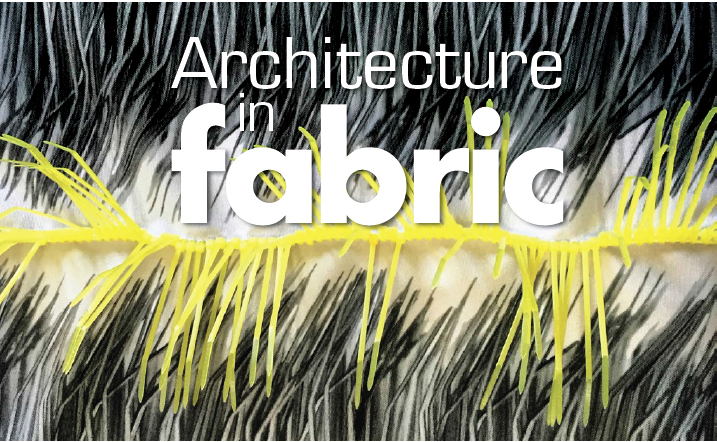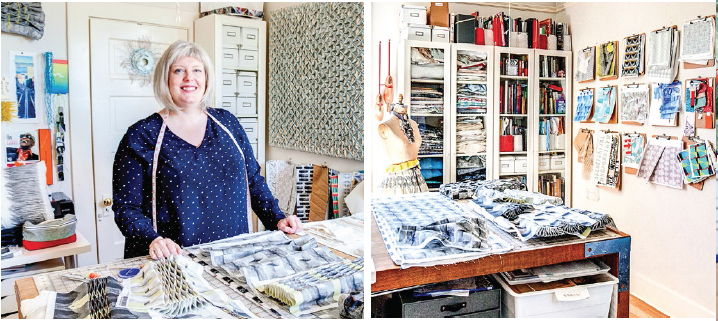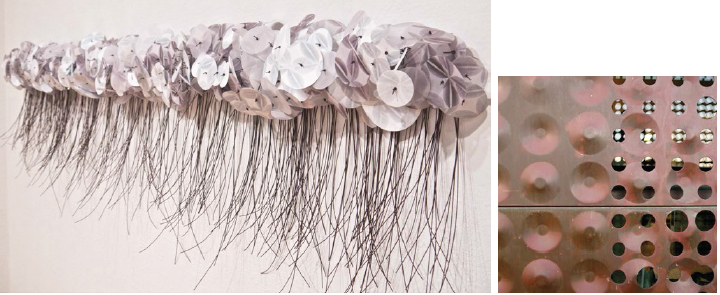Architecture in Fabric
 |
 |
|
|
 |
|
|
 |
|
her 'De Young Dots' (left). |
At a large crafts show a few years back, the objects on display by Ealish Wilson stood out for a simplicity that looked modern and even a bit minimal—and for their oddness. It wasn't immediately clear exactly what they were.
"People can be funny about textiles," Ealish says, noting that art professionals often regard fabric works as more craft than fine art. But, Ealish (pronounced Ay-lish) says, "I think of myself as being a textile artist."
She's also a bit of an alchemist.
While Ealish has produced pillows and fabric for upholstery, and she is designing fabric for a high-end fashion maker, her focus is on three-dimensional fabric art to hang on walls and sit on pedestals, she says.
She defines 'fabric' broadly to include such materials as Tyvek insulation, plastic zip ties, and recycled plastic bottles. And she treats her materials in ways that are both rooted-in-tradition handmade, and 21st century digital.
She manipulates image-soaked fabric once, then again, then again, then again, until the final product has been transmogrified, like lead into gold, in ways that sometimes reveal the original images—if you look closely.
"For me," she says, "it is about taking something and making it into something else. I love doing that."
These days Ealish's signature works are her smocked wall hangings, which range in scale from intimate to wall-sized. Smocking is an ancient embroidering technique of gathering fabric into pleats to provide a degree of elasticity, very useful for collars.
"What happens is, it just concertinas up, you see?" Ealish says, demonstrating the technique in her compact San Francisco home studio. "It's a form of pleating where you catch opposite sides and it makes it stretchy."
It's not a common fine arts technique, says Michael Yochum, who with partners runs Arc Studios & Gallery in San Francisco. "I'm not aware of anyone doing smocking like she does. It is pretty unique," he says.
Smocking may be antique, but how Ealish gets her visual imagery for smocking is of today—though it does suggest medieval alchemy.
She starts by taking a digital photo—of a marking on a parking lot in Japan for one project; photos of landscapes taken from a plane for a current project; or photos of exterior details of the M.H. de Young Museum for another.
Then the alchemy begins. The digital image is printed onto fabric. For the de Young-based work, Ealish "isolated one part of [the image] and created a repeat pattern," she says.
But this isn't the fabric that goes into her final piece. Instead, she manipulates the fabric to create new designs, then takes a photo of the manipulated fabric, prints the photos on new fabric—and then gets to the smocking.
"What I like to do is take very mundane items, and then make them become more aesthetically pleasing," she says. "I like the idea that you start with something, and then by whichever manipulation you choose, it just makes it into something new. It gives it a new life."




